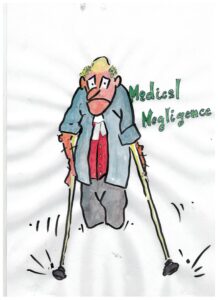Adequacy of reasons in a criminal case
- 2021-09-01
- By Dr Will Higgs PhD, Barrister
- Posted in Appeals, Artificial Intelligence, Criminal law, featured, Reasons for a decision
By Dr William Higgs, Barrister
The general principles in relation to the evaluation of the adequacy of reasons are well established (Chief Executive Officer, Department for Child Protection and Family Support v IGR [2019] WASCA 20; (2019) 54 WAR 222 [112] (Quinlan CJ, Murphy & Beech JJA). Necessarily the content and detail of reasons will vary according to the nature of the jurisdiction being exercised and the subject matter of the case ( DL v The Queen [2018] HCA 26; (2018) 266 CLR 1 (DL v The Queen) [32] (Kiefel CJ, Keane & Edelman JJ). In the context of a criminal trial heard by judge alone, the High Court most recently described the failure to resolve a particular dispute in the following terms:( DL v The Queen [33] (Kiefel CJ, Keane & Edelman JJ) )
At one extreme, reasons for decision will not be inadequate merely because they fail to address an irrelevant dispute or one which is peripheral to the real issues. Nor will they be inadequate merely because they fail to undertake ‘a minute explanation of every step in the reasoning process that leads to the judge’s conclusion’. At the other extreme, reasons will often be inadequate if the trial judge fails to explain his or her conclusion on a significant factual or evidential dispute that is a necessary step to the final conclusion. In between these extremes, the adequacy of reasons will depend upon an assessment of the issues in the case, including the extent to which they were relied upon by counsel, their bearing upon the elements of the offence, and their significance to the course of the trial. In particular:
‘Ordinarily it would be necessary for a trial judge to summarise the crucial arguments of the parties, to formulate the issues for decision, to resolve any issues of law and fact which needed to be determined before the verdict could be arrived at, in the course of that resolution to explain how competing arguments of the parties were to be dealt with and why the resolution arrived at was arrived at, to apply the law found to the facts found, and to explain how the verdict followed.’
In the case of S v The State of Western Australia [2021] WASCA 154, the following commentary is of practical assistance.
“In the present case, the challenge to the adequacy of the learned trial judge’s reasons, which we accept to have been made out, rested principally on the way in which her Honour dealt with the evidence of the appellant.
First, while the learned trial judge stated that she rejected the appellant’s evidence (including his denials of offending), her Honour did not provide any reasons for having rejected that evidence. In the context of her Honour’s rejection of his evidence the only two matters referred to by the learned trial judge were:
(a) that the appellant’s evidence as to the opportunity to have committed the offence was consistent with that of Z; and
(b) that there was no motive or reason for the appellant to have committed the offence.
Neither of these matters was a reason for rejecting the appellant’s evidence. The first (opportunity) was, at best, neutral as to the credibility and reliability of his evidence and the second (lack of motive) was in the appellant’s favour.
Of course, it may be accepted that, in a case of ‘word against word’ (as her Honour recognised this case to be), the advantages of the trial judge having seen and heard the witnesses may be such that demeanour and the impression formed by the trial judge as to the credibility and reliability of the witnesses may assume particular importance. In that case, the legitimate use of such impressions and demeanour may be difficult for the trier of fact to articulate. A trial judge is not required, in that regard, to embark on an infinite regression of reasons for reasons.” (Child and Adolescent Health Service v Mabior by next friend Kelei [2019] WASCA 151; (2019) 55 WAR 208 (Mabior) [100] (Quinlan CJ, Murphy & Pritchard JJA).)
SEARCH BLOG POSTS
LATEST BLOG POSTS
- Updated product safety mandatory reporting guidance for suppliers now available
- Pleading fraud – cause and effect is essential
- Does the Trustee’s right of indemnity have priority over the right of beneficiaries in relation to assets?
- Rules of war (in a nutshell) | The Laws Of War
- MH370 Final Report
Past Blog Posts
- December 2021
- September 2021
- August 2021
- May 2021
- April 2021
- March 2021
- August 2020
- February 2020
- September 2019
- February 2019
- December 2018
- July 2018
- April 2018
- December 2017
- May 2017
- February 2017
- December 2016
- November 2016
- October 2016
- September 2016
- August 2016
- April 2016
- March 2016
- October 2015
- September 2015
- August 2015
- May 2014
- April 2014
- March 2014
- January 2014
Categories
- Appeals
- Artificial Intelligence
- Aviation law
- Banking and Finance Law
- Blogs
- Civil Liability Act
- Class Actions
- Coding for lawyers
- common law
- Consumer Claims (TPA)
- Contract Law
- Contractual Interpretation
- Criminal law
- Deeds
- Docassemble
- duty of care
- Engineering Law
- Equity
- Evidence
- Exclusion Clauses
- Execution of documents
- Expert Witness
- featured
- Financial Services
- Fraud
- Fundraising (Chapter 6D)
- General comment
- Home Building Law
- Insurance
- Legal drafting
- Local Court
- Medical Negligence
- MH370
- Motor Accidents
- Negligence
- Occupiers negligence
- Other
- Personal Injury
- Personal Property Securities (PPSA)
- Pleading
- Practice & Procedure
- Products Liability
- Property
- Real Property
- Reasons for a decision
- Securitisation
- Security (Mortgages & Charges)
- Sentencing
- Swaps & Derivatives
- Teaching
- Transactional Law
- Transfer of financial assets in transactions
- Trusts & Trustee Law
- Uncategorized
- War and Weaponry
- Witnesses
SEARCH BLOG POSTS
LATEST BLOG POSTS
- Updated product safety mandatory reporting guidance for suppliers now available
- Pleading fraud – cause and effect is essential
- Does the Trustee’s right of indemnity have priority over the right of beneficiaries in relation to assets?
- Rules of war (in a nutshell) | The Laws Of War
- MH370 Final Report
Past Blog Posts
- December 2021
- September 2021
- August 2021
- May 2021
- April 2021
- March 2021
- August 2020
- February 2020
- September 2019
- February 2019
- December 2018
- July 2018
- April 2018
- December 2017
- May 2017
- February 2017
- December 2016
- November 2016
- October 2016
- September 2016
- August 2016
- April 2016
- March 2016
- October 2015
- September 2015
- August 2015
- May 2014
- April 2014
- March 2014
- January 2014
Categories
- Appeals
- Artificial Intelligence
- Aviation law
- Banking and Finance Law
- Blogs
- Civil Liability Act
- Class Actions
- Coding for lawyers
- common law
- Consumer Claims (TPA)
- Contract Law
- Contractual Interpretation
- Criminal law
- Deeds
- Docassemble
- duty of care
- Engineering Law
- Equity
- Evidence
- Exclusion Clauses
- Execution of documents
- Expert Witness
- featured
- Financial Services
- Fraud
- Fundraising (Chapter 6D)
- General comment
- Home Building Law
- Insurance
- Legal drafting
- Local Court
- Medical Negligence
- MH370
- Motor Accidents
- Negligence
- Occupiers negligence
- Other
- Personal Injury
- Personal Property Securities (PPSA)
- Pleading
- Practice & Procedure
- Products Liability
- Property
- Real Property
- Reasons for a decision
- Securitisation
- Security (Mortgages & Charges)
- Sentencing
- Swaps & Derivatives
- Teaching
- Transactional Law
- Transfer of financial assets in transactions
- Trusts & Trustee Law
- Uncategorized
- War and Weaponry
- Witnesses




